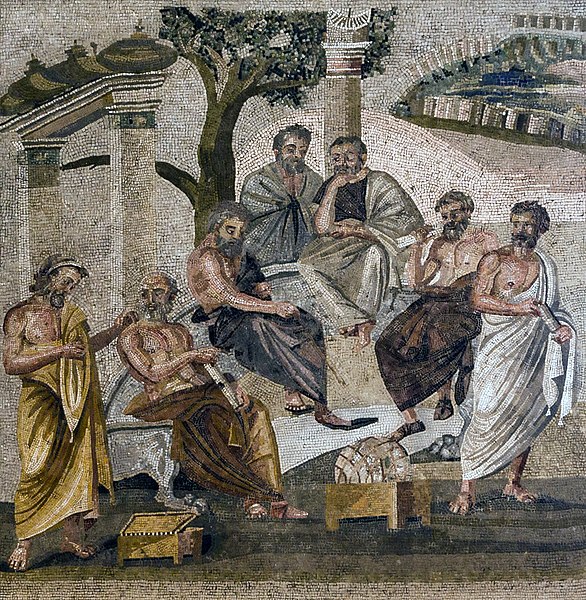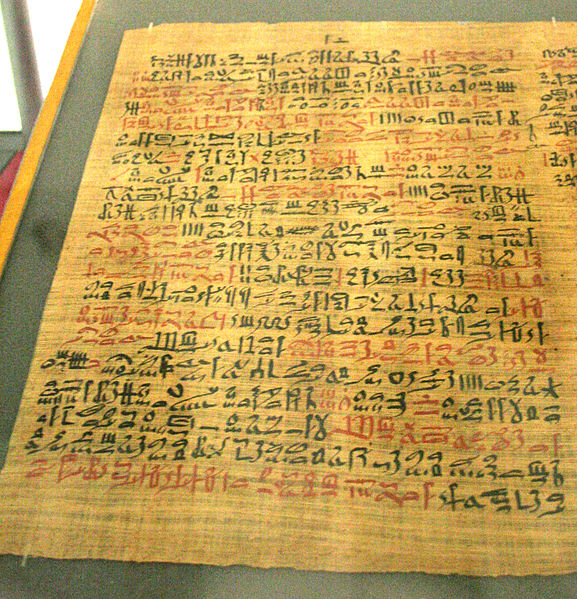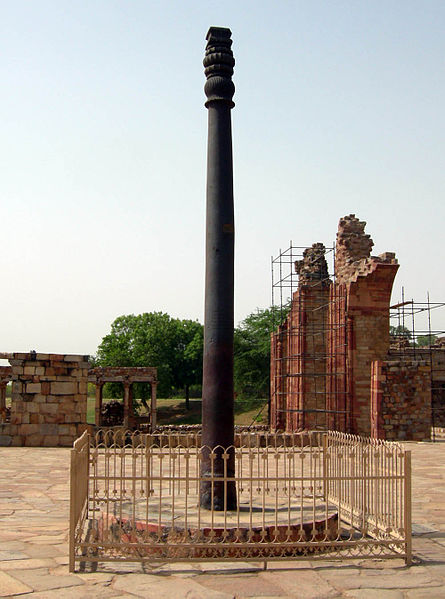Science in classical antiquity
Science in classical antiquity encompasses inquiries into the workings of the world or universe aimed at both practical goals as well as more abstract investigations belonging to natural philosophy. Classical antiquity is traditionally defined as the period between the 8th century BC and the 6th century AD. It is typically limited geographically to the Greco-Roman West, Mediterranean basin, and Ancient Near East, thus excluding traditions of science in the ancient world in regions such as China and the Indian subcontinent.
The Ptolemaic system of celestial motion as depicted in the Harmonia Macrocosmica (1661).
The physician Hippocrates, known as the "Father of Modern Medicine"
A mosaic depicting Plato's Academy, from the Villa of T. Siminius Stephanus in Pompeii (1st century AD).
George Trebizond's Latin translation of Ptolemy's Almagest (c. 1451)
The history of science covers the development of science from ancient times to the present. It encompasses all three major branches of science: natural, social, and formal. Protoscience, early sciences, and natural philosophies such as alchemy and astrology during the Bronze Age, Iron Age, classical antiquity, and the Middle Ages declined during the early modern period after the establishment of formal disciplines of science in the Age of Enlightenment.
The Ebers Papyrus (c. 1550 BCE) from ancient Egypt
Clay models of animal livers dating between the nineteenth and eighteenth centuries BCE, found in the royal palace at Mari in what is now Syria
Star list with distance information, Uruk (Iraq), 320-150 BCE, the list gives each constellation, the number of stars and the distance information to the next constellation in ells
Ancient India was an early leader in metallurgy, as evidenced by the wrought-iron Pillar of Delhi.








